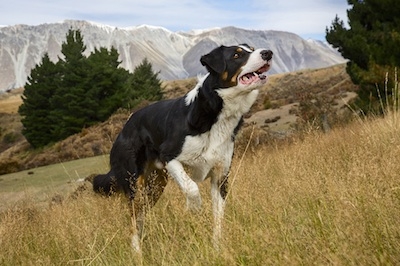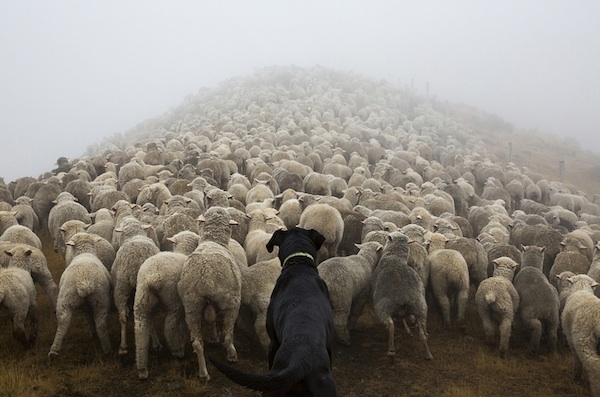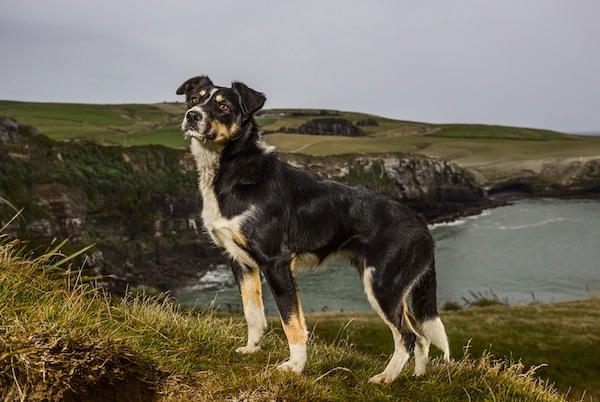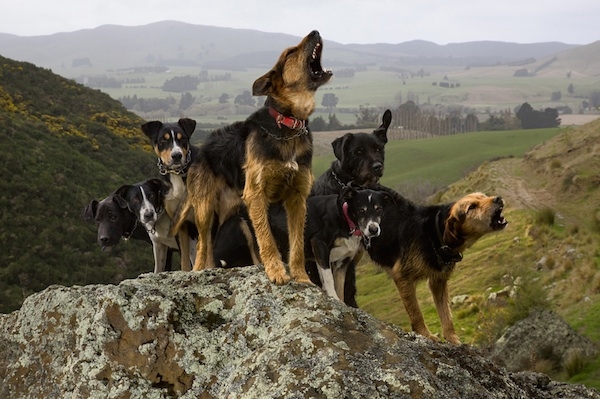Photographer Profile - Andrew Fladeboe: "I was driven by wondering whether I could make serious art about animals"

|
|
|
“I find it so interesting that two species that hunted the same prey would team up,” says Andrew Fladeboe. “They helped us evolve. Humans wouldn’t be where we are as a species without dogs, and vice versa.”
Fladeboe, a graduate of the Rhode Island School of Design now pursuing an MFA at the University of Minnesota, has made a name for himself in fine-art circles for several series of photographs focused primarily on working dogs from farms in Norway and New Zealand. The work, which looks deeply and with unabashed sentiment at the bond between dogs and humans, has found an audience that includes both dog lovers and photography connoisseurs.
Or, as in the case of legendary fashion photographer Bruce Weber, those who are both.
“If you have been daydreaming about getting a dog, check out Andrew Fladeboe’s photographs,” says Weber. “Just by looking at the pictures, you can hear them barking and saying, ‘Take me home.’”

While the Internet overflows with pictures of man’s best friend, Fladeboe’s images aim uncommonly high, combining grand landscape photography with powerful portraiture grounded firmly in art history.
“They’re heroic,” says New York photography dealer Peter Hay Halpert, who is giving Fladeboe his first solo exhibition this fall. The show, which features 16 of Fladeboe’s 30 x 40-inch prints, opens on October 8 and runs through November 1. “One of the hallmarks of any successful portrait — whether it’s of a dog or a person — is that it implicitly lets the viewer feel the empathy and the understanding between the subject and the artist,” says Halpert. “You certainly sense that in these photographs. ”
“I was driven by wondering whether I could make serious art about animals,” says Fladeboe. Luckily, dogs came to his rescue.
A Gift From The Gods
The images in the exhibition come from several projects made over the past two years and grouped under a single title, “The Shepherd’s Realm.” Fladeboe began the work, in a sense, during his time at RISD. “They told me to do what I loved, and I did,” he says.
An army brat, Fladeboe was raised all over the globe, from Virginia to Japan, Moscow and Austria. And, he says, he grew up relating to the world through animals.
“When I was little, Dr. Dolittle was my hero,” he says. “So later I decided to make artwork about animals. I did an artist’s residency in Scotland and shot all kinds of animals when I was there, but I didn’t think the work was as strong as it should be, so I decided to focus on one type of animal, and I chose dogs because I could go to any culture in the world and photograph native dogs.”
At the same time, Fladeboe began studying the work of Sir Edwin Landseer, the 19th-century English artist known for his paintings of animals — particularly horses and dogs. “He was the first to elevate dog painting to the realm of art,” says Fladeboe. “I thought that there were similarities between what he did and what I wanted to do, which was to treat the animals as sentient beings.”

Fladeboe began to find his way creatively when he made a two-month trip to Norway. “I’m Norwegian by heritage, so I was drawn there personally,” he says. He was also drawn by the country’s landscapes, which are prominent features in his photographs. "My work is based loosely on romantic painting, with its sublime, grand landscapes,” he says. He used Google to find breeders and farmers who would let him photograph their dogs.
“I found that the native dogs in Norway were working dogs, and that led me to the idea of narrowing my focus even further,” Fladeboe says.
For much of history, dogs existed primarily as workmates for humans — until the Victorian era, when increasing wealth and a burgeoning middle class enabled more people to keep dogs as pets. For Fladeboe, the working dog, “the original dog,” as he puts it, embodied the quintessential link between human and canine.
“They represent the most noble of animals, a gift from the gods that has evolved with us and helped us develop as a species,” he would write later.
WWOOFing For Art
With that
inspiration, he wrote a proposal for a Fulbright Scholarship that allowed him to spend a year in New Zealand, a country long known for its sheep industry and its sheep dogs.
“Working dogs
are still a huge part of the culture there,” he says.
Appropriately, he met farmers in New Zealand by WWOOFing.
WWOOF — World Wide Opportunities on Organic Farms — is a network through which volunteers can work on farms in exchange for room and board. “I would stay with these farmers and work during the day, helping with chores and moving sheep. That truly gave me a sense for life there,” Fladeboe says.
His photography took two forms — shooting documentary-style images with his Canon 5D Mark III DSLR, as well as formal portraits. For the latter, the help of the dogs’ owners was crucial. “They usually enjoyed it, because it was a test of how well their dogs were trained,” says Fladeboe. “I would shoot for a bit and the dog would get bored, so the owner would take the dog for a little walk around or have him lie down.”
For the portraits, Fladeboe placed two small flashes on mini-tripods to act as strobes on either side of his subject. “The whole setup fits in a backpack so I can go hiking with it,” he says.

A
typical portrait session could last for five minutes or an hour, depending on the dog. “Luckily, I was working with dogs that are highly intelligent, especially the border collies,”
Fladeboe says. “They would pick up on the whole thing pretty quickly — it was like, ‘Oh, I see what you want me to do.’”
One of his favorite models was a New Zealand breed called the Huntaway. “They’re big lumbering dogs that bark really loudly, and they're amazing to shoot because they’re just hams for the camera,” says Fladboe. “They’ll just stand in a spot and bark away for you.”
Part of the intrigue of the photographs, notes Halpert, is that fact that some are heavily manipulated, incorporating perspectives from several images — while others are unaltered. “You’re never quite sure which it is,” he says.
In all the photographs, Fladaboe treats his subjects with great respect. “Dogs in photos are usually used as a trope or a means to an end,” he says. “I make the pictures for the animals’ sake, not art’s sake.”



